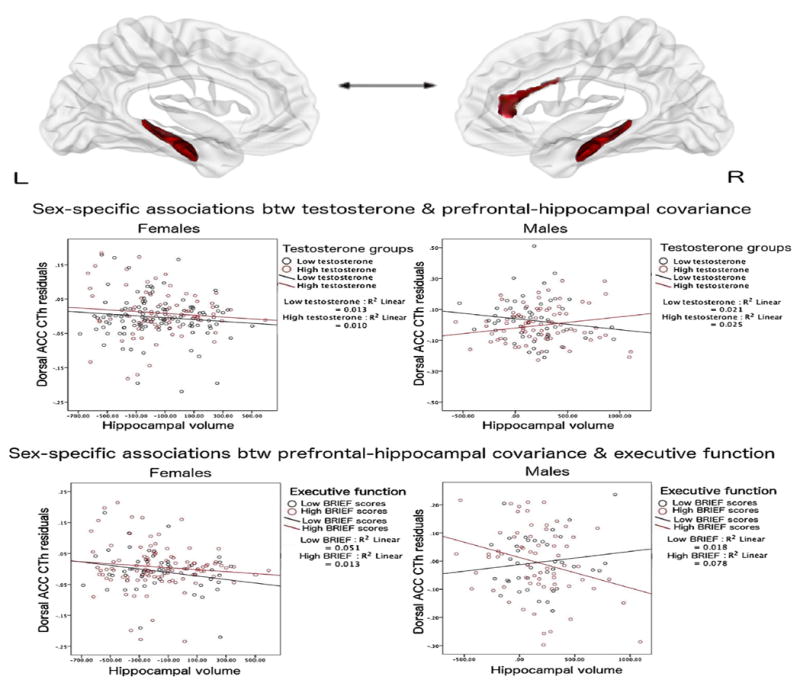Fig. 1.

Testosterone, Prefrontal-Hippocampal Structural Covariance & Executive Function
This figure shows sex-specific associations between testosterone, prefrontal-hippocampal structural covariance and executive function. In boys (but not girls), prefrontal-hippocampal covariance varied according to testosterone levels. In addition, in boys (but not girls), prefrontal-hippocampal structural covariance predicted scores on different components of executive function (BRIEF Monitor and Shift subscales).
Top two brain figures: Left hippocampus (on the left) and right hippocampus (on the right) are shown, along with the significant area of the right dorsal anterior cingulate cortex found to be significant in whole-brain analyses, corrected for multiple comparisons using random field theory (p < 0.05).
Middle two graphs: In boys, higher testosterone levels were associated with a positive covariance between mean hippocampal volume and cortical thickness of the right dorsal anterior cingulate gyrus, while lower testosterone levels were associated with a negative covariance between these regions.
Bottom two graphs: In boys, positive prefrontal-hippocampal covariance (associated with higher testosterone levels) was associated with lower BRIEF scores (executive function), while negative prefrontal-hippocampal covariance was associated with higher BRIEF scores (BRIEF Monitor shown as an example, similar results with BRIEF Shift). Testosterone and cognitive scores were split into high and low groups for the purposes of visualization, based on the values at which prefrontal-hippocampal covariance shifted from positive to negative, even though both variables were included as continuous variables in all analyses. Further, please note that although the individual slopes for each dichotomous group are included here for informative purposes, they do not reflect the significance of the interaction analyses, which used continuous measures of testosterone and cognitive scores.
ACC: anterior cingulate gyrus
CTh: cortical thickness
